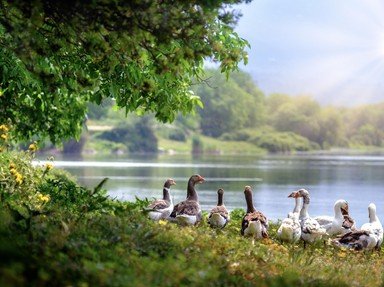Quiz Answer Key and Fun Facts
1. Clearly highly thought of throughout Central America, the first word of this bird's name is 'resplendent'. Which bird, a national emblem of Guatemala, is shown in the picture?
2. Known for the elaborate courtship dance performed by the males of the species, which model bird do we have here?
3. Despite its distinctive red, blue and yellow colouring, which colour precedes 'macaw' in the name of this national bird of Honduras?
4. The photo shows a male red-headed barbet, found in the humid uplands of Costa Rica and Panama. Does the female of the species share the namesake colouring?
5. Our next bird is found on the Caribbean side of Central America and displays a real cocktail of plumage. Which bird is shown in the photo?
6. Their brightly coloured beaks are perhaps the most distinctive in the avian class. The national bird of Belize, the 'keel-billed' variety of which bird is shown in the photo?
7. Distinguished by the turquoise head feathers and black 'mask', this photo shows the blue-crowned variety of which 'wordy' bird?
8. Despite the abundance of brightly coloured birds in the country, Costa Rica chose a small brown bird as their national symbol. Known locally as the yigüirro, what is the alternative name for this bird?
9. Sharing part of its name with a family of wading birds, with which it shares some resemblance, which Central American bird is actually the only member of the family Eurypygidae?
10. Featured prominently in Mayan codices and popular in zoos across the world, which indimidating scavenger is shown in the photo?
Source: Author
pagea
This quiz was reviewed by FunTrivia editor
rossian before going online.
Any errors found in FunTrivia content are routinely corrected through our feedback system.
